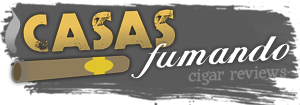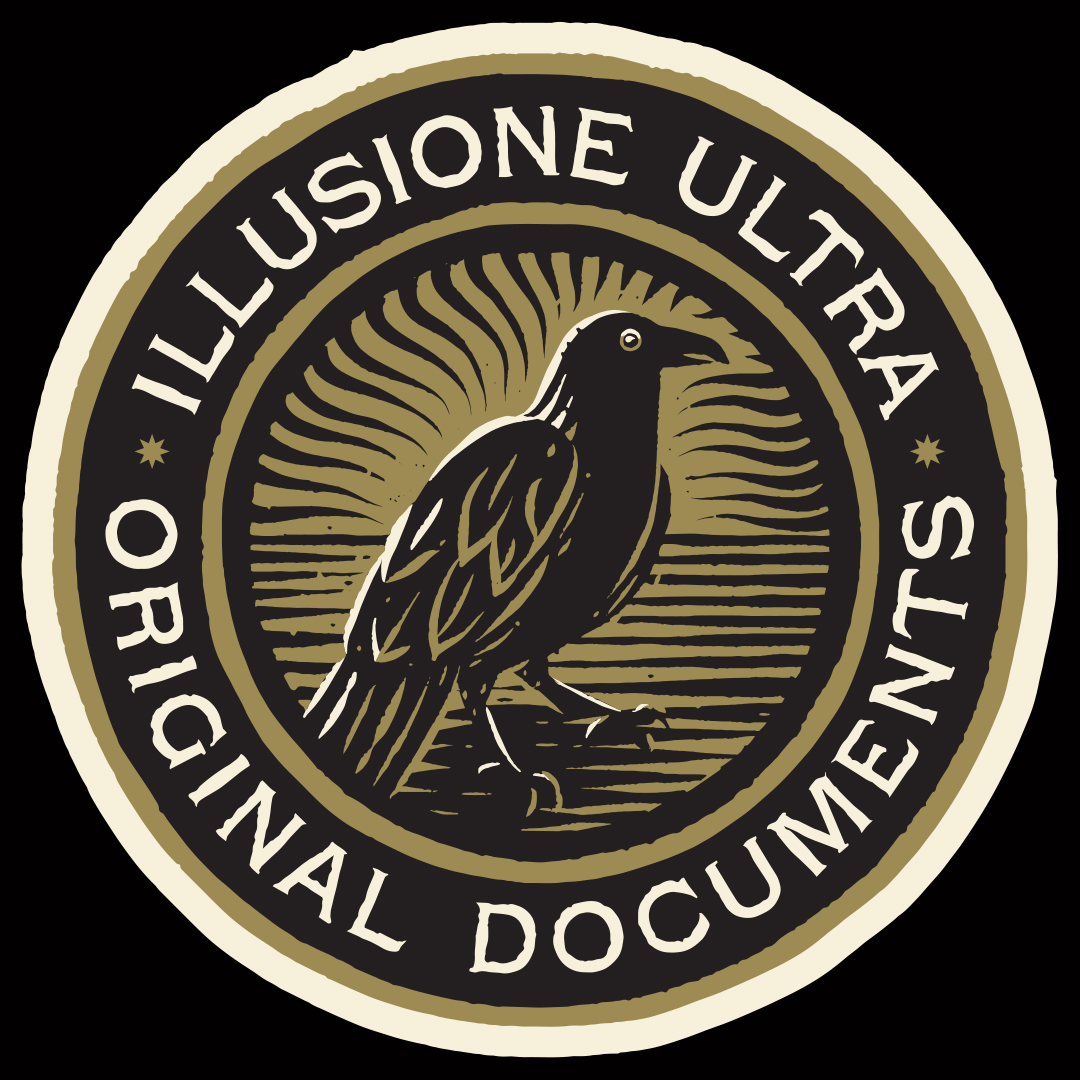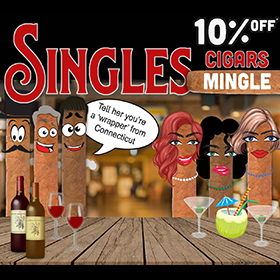Event Coverage
Drew Estate – Cigar Safari 2012 – Blogger Trip Day 3
So here we are, the third and final day at the Drew Estate Cigar Safari. If you missed the previous two days, you can check out day 1 here and day 2 here. If I had known just how crazy and jam-packed this final day was I would have gotten even more rest than I did. Let’s dive right in. I actually woke up around 4:30 in the morning that third day. You see, I had a bit to drink the night before and needed to relieve myself. The funny thing is, at 4:30am I walk outside to find an unnamed person coughcoughbencoughcough standing in front of my door. You see, there is only 1 bathroom to every 2 cabanas. I was sharing mine with this unnamed gentleman who just happened to be up at 4:30. Thankfully too as he warned me not to go into the restroom. So I didn’t. Anyways. Back to sleep I went, then I awoke around 7am that morning and once again enjoyed a wonderful breakfast on the Drew Estate Patio. Breakfast consisted of bananas, eggs, and beans. Jerry Cruz was a smart one who decided to stop eating the beans for the sake of all the others on the bus as we headed out early to tour the Joya De Nicaragua factory.
We were greeted by Jose Blanco and Mario as soon as we arrived. The first thing you notice about the JDN factory was how old, yet well taken care of the factory is. There is a lot of history there and it shows. After a brief introduction Jose and Mario took us inside. Right away I was surprised by just how small and quaint the factory is. It seems as if this is the little factory that could. Once we got out to the production floor I couldn’t help but get a sense of pride from all the workers. It was a totally different feel than any other factory I had toured in the past. The factory is set up very different too. There are two main floors, production goes down on the top floor while storage and packaging take place on the bottom floor. Once you climb the stairs you are thrown right into the rolling floor. Surrounding the rolling area are the sorting, tobacco storage, and quality assurance areas. One neat conversation I had with Jose Blanco was concerning the quality assurance process of the Cabinetta serie cigars. I was watching a lady roll only the maduro portion onto the cigar. You see, the cabinettas are rolled with the natural wrapper just like any other cigar, then a separate roller adds the maduro section. Jose was telling me that they limit their rollers productivity. They get paid per piece, but most are limited to about 325 cigars a day. There reason they do this is so that the roller doesn’t try to speed through their cigars to make more money which could possibly produce bad quality cigars. The idea is to pace yourself and do every cigar right. I then asked if that goes the same for that one roller who only had to place the maduro cap section on the Cabinetta, and surprisingly it did. They train that roller to be extra precise with that one portion. We even timed her with the roller rolling full sized cigars next to her and sure enough, they were working at the same piece. What this means is, each Cabinetta made actually costs Joya De Nicaragua almost twice as much in man-power cost, yet they commit to keeping the cost of that cigar low. Nicely done JDN.
Anyways. After touring the entire production floor we headed downstairs to take a look at warehousing and packaging. Again, this factory in all aspects is a well oiled machine. They have about half the people pumping out just as much product. The employees there really seem to know what they are doing. One thing I didn’t ask was what the average length of employment was for each of the workers there. I would imagine with the history of the company it would be pretty lengthy.
After the tour Jose and Mario brought us out back to an open, covered patio for some coffee and our Joya De Nicaragua blending session. The blending session here was really straight forward. We were schooled on the types and differences of the tobacco that they carry at Joya De Nicaragua. We were given tips on how to mix them, and what to pay attention to as we felt the texture of the tobacco, smelt the aromas, and even rolled a few leaves up and smoked them. Thor obviously new how to roll his own, but Mario Takeyama had some problems. I don’t have a picture of it, but I know some of the other guys there snapped a few. Basically, he made what he called the “Mawio Cigaw Buwwito”. It was almost the size of my arm. Man I love that guy.
After the blending sessions we headed back to Drew Estate to enjoy a relaxing lunch before checking out Jessie Flores’ subculture studios. Bascially, Subculture studios is the place where all the artwork for all the crazy Drew Estate projects gets thrown down. The company started with Jessie doing all the work. He actually explained that he hooked up with Jonthan Drew as a mere graffiti artist who ran into him at a gas station. The two hit it off and became good friends. As time went on, Jessie realized that Jonathan spoke very poor Spanish, and his translator sucked so Jessie went on to assume that role. The two became very close and as time went on Jessie soon became the artist behind all things Drew Estate.
Jessie now employs a handful of people under him who ensure that all things Drew Estate are hip, artistic, and plentiful. Serious this kid has so much raw talent it’s scary. You should really check out the pictures at the end of the post to see more of his artwork.
We headed back out on the road, this time on our way to visit the My Father factory. It was interesting to see how close the Nicaraguan factories are both in terms of distance, and relationships. Joya, Drew Estate, Oliva, Perdomo, and My father were all within a few minutes of each other
The rain had been hitting hard all day. We were actually there during the rainy season which means it was incredibly sunny one minute, pouring rain the next, the back to sunny, back to rain, and the cycle continued. Kind of like that clip in Forrest Gump. Anyways. What the rain did was it actually caused part of the My Father factory to lose power. Pete Johnson from Tatuaje greeted us at the door and took us on our tour. The first leg was the 4 buildings that were sans-power; the tobacco receiving, storage and sorting areas. It was different than most factories as each of these areas were housed within their own buildings. I wish I could have gotten more pictures there, but most of them didn’t come out due to the fact that it was pitch black.
After we toured the smaller buildings we headed inside while making a quick stop at the box storage area. My Father actually has a full box manufacturing facility on site, but it was closed and locked when we too the tour so sadly, we didn’t get to see that. Either way I was very impressed with the massive amounts of ready made boxes they had on hand. We proceeded through the tobacco bodega, then onto the rolling floor. Much like Drew Estate, My Father is a huge factory with a ton of rollers. Every at that, I don’t think that they had more than Drew Estate did. One awesome addition was a double table roller set put up in front of the rest of the rollers. You can see in the picture below who these two seats belong to.
After the production tour we hit the packaging department. Again, this area was huge. There was a ton of neat little projects going on. We actually got to take a first, hands on look to the much anticipated “Little Monsters” series by Tatuaje.
We ended the tour with a few minutes with the man, Jaime Garcia. The air in any room feels different when you have Steve Saka, Jaime Garcia, Pete Johnson, Jose Blanco, and Willie Herrera in it. It was a shocker and I think we were all impressed at the amount of talent and knowledge in that room.
After the My Father factory the Cigar Safari team lead us to a quick tour of the Oliva factory. After being in so many factories we were brisked through this one. The first thing I noticed about the factory was it was rather primitive. They weren’t using some of the same technologies or procedures some of the larger factories did. Again, this factory was just more of a hands on machine. This isn’t to say the company doesn’t produce top-quality smokes, we all know they do. It was just interesting how they seemed to put less money in the factory which ultimately shaves off the cost of their product. Oliva has always produced quality, cost effective cigars.
The most impressive part of the Oliva tour was the massive amounts of tobacco they have stored. Seriously, there were tons. Another great experience at the factory was we got to meet the legend himself, Gilberto Oliva, a.k.a. “the chick magnet”. Ok, they don’t call him that, but they did go on to tell us on how much a of a flirt he was. Look at the dude, he’s got charm written all over him!
The last leg of this expedition was a tour through the Drew Estate tobacco bodega. This was basically a crash course led by Steve Saka on how they store, ferment, and ready their tobacco for processing. I’ve never actually been involved as much with the hands on fermentation of tobacco so I soaked up a ton of knowledge from this experience. For those of you who don’t know, tobacco is fermented by being stacked in huge “pilons” about 4 feet tall. I have no idea how to spell that word, but you get the idea. Anyways, the stacking of the tobacco causes a reaction within the leaves that heats up the tobacco to temperatures as high as 160 degrees. No one knows for sure if it’s a chemical reaction or biological, but Steve Saka and Jose Blanco seem to think it’s more chemical. As the tobacco heats it releases the natural aroma into the air. They track the tobacco on a daily basis and rotation the fermentation as needed. We got to actually stick our hands inside a pilon to see just how hot it gets, ant it’s hot! Saka said that if you leave it unattended long enough it could actually combust and catch fire. Luckily, fire is the only disaster Drew Estate has yet to face (knock on wood).
From the tobacco bodega we headed back to Drew Estate for a much needed rest, and dinner. Burrito dinner to be exact with some of the best BBQ I have had. After dinner we hung out on the patio for some time before Jose Blanco started his blending session. This session was much more intensive. We started out by smoking a cigar that had 4 different wrappers. We had to guess which tobacco was used. I actually went 3-4 on that. He also went into everything from taste, texture, body, strength, and construction. One huge subject that came up was flavor in which Saka and Jose agreed with us bloggers that taste is related to memories of items that we have actually enjoyed. For instance, when we say chocolate and coffee, this is just our taste buds picking up flavors that remind us of coffee and chocolate which enables us to describe these flavors to you all. This is a subject that comes up often and I am glad that someone was finally on our side.
And that was that, the end of the trip. A few of us spent that night smoking and drinking late into the evening. Steve Saka eventually joined us and told us all sorts of stories from his past, his family, when he was a blogger, and the start of his career. It was really nice to hear from him on such a personal level. I swear, that guy needs to write a damn book on his experiences. One thing that I loved about the trip was Jonathan, Saka, and Jose’s love for not only what they do, but for us. Not many companies see new media as a valid form of media. Although more and more are coming around, these guys really see the power in what we do, the passion behind it, and the work we put in and respect it and us. We felt loved. At least I did.
In closing, I just want to thank everyone involved in this trip. It was a once in a lifetime experience and I urge any cigar enthusiast to enjoy a Cigar Safari trip. You get to meet amazing people, experience a wonderful country, and get schooled on the cigar manufacturing process. Again, Thank you Steve Saka, Jonathan Drew, Pedro, Allejandro, Pedro, Jessi, Jose Blanco, Gary, Pete Johnson, Dave Lafferty, John Brooke, Willie, and everyone else that joined us, and welcomed us.
Check out more pictures from the day: (click each image, once you are done hit “back” on your browser to return to this page. Annoying, I know, but the only other quick option was stupid flash.)
Click Here if you rather see the image via my personal Flickr slideshow.
































































































































8 Comments